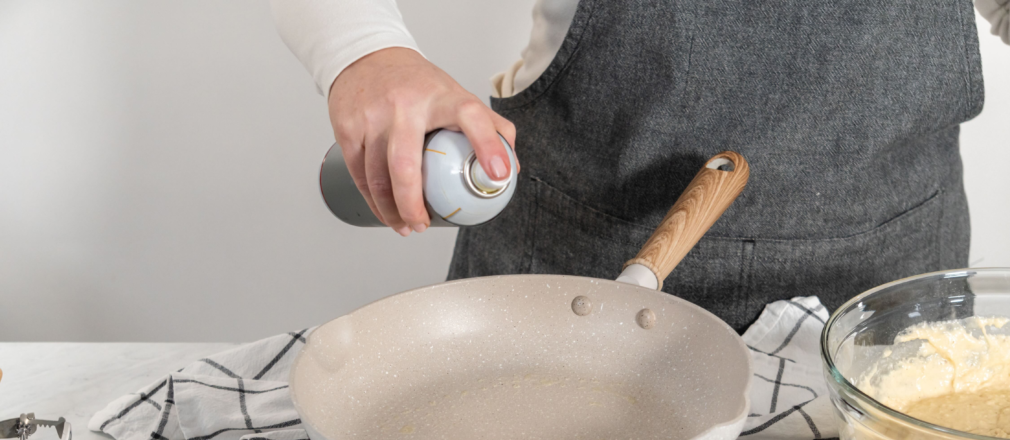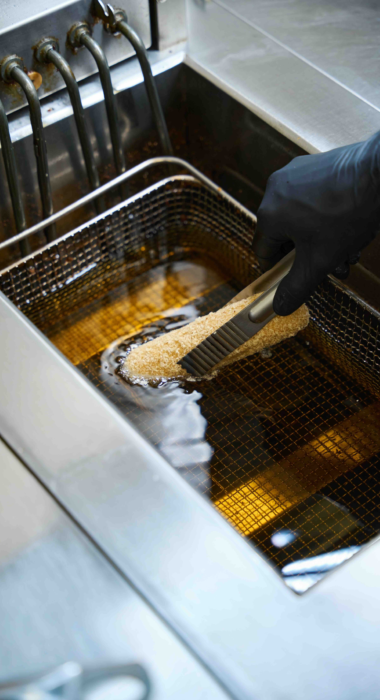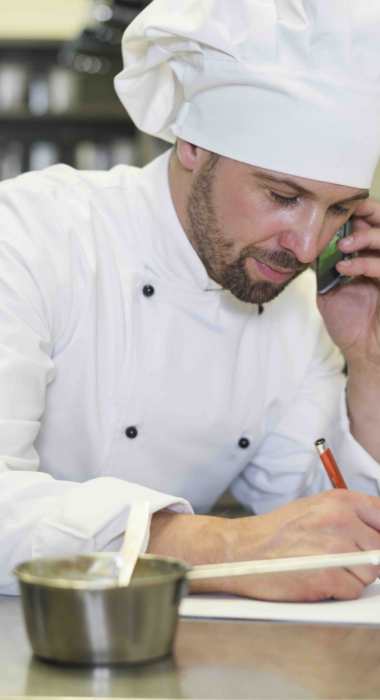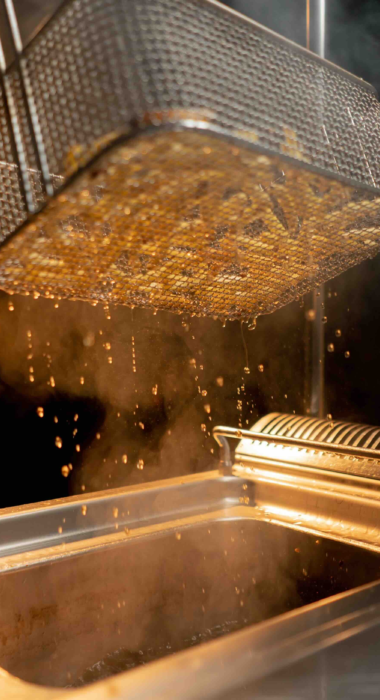ADVICE | SEPTEMBER 22 2025
6 Common mistakes when using non-stick in the kitchen

In a professional kitchen, every detail matters to ensure efficiency, quality, and safety in food preparation. One of the key elements to achieve this is the use of non-stick products, especially those made with canola oil, which allow for healthier cooking and cleaner utensils.
However, there are common mistakes that can affect their performance and durability. In this article, you will learn about the six most frequent mistakes when using non-stick products and how to avoid them to ensure safe and efficient cooking.
Why use non-stick?
The use of non-stick spray has become an essential tool in the professional kitchen due to its practicality and efficiency.
This product, generally made from canola oil, allows for an even application that prevents food from sticking, facilitates proper cleaning, and extends the lifespan of cooking utensils.
Additionally, it optimizes preparation time by ensuring safe and controlled cooking, reducing excessive use of fats and improving the consistency of dishes.
In high-volume kitchens, non-stick spray not only offers better performance but also contributes to a cleaner, faster, and more efficient operation.
1. Not considering the type of utensil
The care of utensils is fundamental when using a non-stick product. Many professionals apply the product on damaged or unsuitable surfaces, reducing its effectiveness. To optimize its performance, make sure to use it on pans, griddles, and molds that are in good condition and designed for frying or baking.
2. Applying excess non-stick
One of the most common mistakes is applying more than necessary. An excess does not improve the quality of cooking and can create residues that hinder proper cleaning. Use only the recommended amount to maintain a balance between coverage and efficiency.
3. Ignoring cooking temperature
A good non-stick product based on canola oil can withstand high temperatures (medium to high), but exceeding the limit can damage the surface of the utensils and alter safe cooking. Follow the manufacturer's instructions regarding the heat range to avoid excessive smoke and loss of properties.
4. Not cleaning utensils properly
Proper cleaning is key to prolonging the life of the non-stick product. Many restaurants and kitchens neglect this aspect, leaving residues that affect the taste and texture of food. Wash utensils with warm water and mild detergent, avoiding abrasive sponges that can damage the surface.
5. Reusing utensils without inspecting them
In a professional kitchen, the fast pace can lead to reusing utensils without checking them. This causes grease buildup and affects the quality of the non-stick product. Before each use, ensure that the surfaces are clean and dry.
6. Not storing non-stick products properly
Storage also influences the performance of the non-stick product. Keeping it in places exposed to heat or direct light can deteriorate its properties, even if it is made with canola oil. Store it in a cool, dry place to ensure its effectiveness.
PrimeChef Non-Stick
Using a good non-stick product can enhance the efficiency of a professional kitchen, facilitate proper cleaning, and ensure safe cooking. Avoiding these six common mistakes not only optimizes the lifespan of utensils but also improves the quality of dishes and reduces waste.
The non-stick product from PrimeChef has all the quality of PrimeChef canola oil, but in a special presentation that yields and facilitates handling food in the pan or molds, preventing sticking and allowing cooking at medium-high temperatures.
Visit our website to find blogs like this or all the information about our products. Likewise, you can contact us to acquire your preferred products for your professional kitchen, or visit our “where to buy” section to get your products delivered to your business doorstep. We look forward to seeing you!



